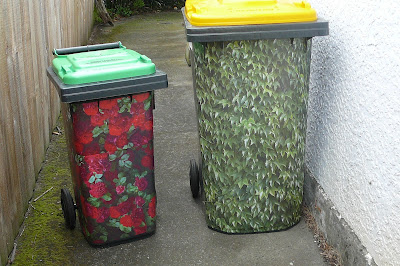Updated guidance for repairing and rebuilding homes affected by the Canterbury earthquakes
The March edition of the Ministry of Business, Innovation and Employment’s Codewords newsletter contains updated information on the repairing and rebuilding homes affected by the Canterbury earthquakes (here).
The information covers:
The guidance focuses on repairs and rebuilds in the Canterbury Green Zone, which is divided into three foundation technical categories – TC1, TC2 and TC3. The updates mainly relate to damaged foundations, foundation options, superstructure repairs and subdivisions. These are clearly marked in the updated document. Most of the changes are minor and were signalled to key players in the building sector before publication.
New format
The updated guidance brings together guidance covering TC1, TC2 and TC3 in one single document. This makes the guidance much easier to navigate. Updates to the earlier versions of guidance are clearly identified by red markers in the new document.
The guidance is formatted into four colour-coded parts comprising Part A – Technical Guidance; Part B – Technical Information; Part C – Technical Category 3; and Part D – Subdivision. Parts A and B of the new document are an update of the revised November 2011 guidance focusing on properties in TC1 and TC2; Part C is an update of the guidance published in April 2012 which deals with foundation repairs and rebuilds for properties in TC3; and Part D is an update of guidance published in September 2012 which deals with subdivisions.
Key technical changes
The main areas of technical change to the guidance include:
1. Technical categories
The guidance clarifies the purpose of the technical categories, noting that they were established as a recovery measure to provide an indication of what geotechnical assessments are required and to determine appropriate foundation solutions for each site.
2. Structural issues
Cracks in slabs and foundation walls
Cracks can be caused by factors other than earthquakes, for example as a result of shrinkage or foundation settlement. The guidance suggests any cracks caused by, or exacerbated by earthquakes should be repaired. It distinguishes between cracks requiring structural repair and cracks that can be easily repaired.
Foundations: options and repairs
There are minor updates to foundation options with some amendments to details and scope extensions for some TC3 foundation options.
Repairs to the superstructure
Guidance on repairing and replacing wall bracing elements and significant wall damage has been updated. There is a new section on repairing lathe and plaster interior wall linings. Diagrams have been revised to show the correct requirements for ventilating chimneys. The section headed ‘Chimney damaged over part of its height’ has been rewritten.
Structural design issues
Guidance is now provided on what house plan regularity means in relation to the requirements for some rebuild foundation solutions, defining base shapes, projections and extensions. New guidance has been provided for stand-alone garages and outbuildings. The guidance encourages the use of light roof and wall cladding materials, particularly in TC3 areas. A new table (Table 7.2) has been added which outlines the maximum cladding weights for new foundations.
3. Geotechnical issues
Investigations
The guidance clarifies investigation depths required and energy rating and use of ground testing equipment.
Liquefaction settlement calculations
The guidance now provides for settlement calculations to be limited to the upper 10m of soil profile for comparison with TC2/TC3 limit indices. The guidance still requires liquefaction characteristics to be assessed and considered over the full depth of the investigation.
Static bearing calculations
Specific calculations required for static bearing have been clarified so that if the site has less than the ‘200 kPa’ or ‘300 kPa’ specified for some of the foundation solutions provided in the guidance, a calculation of specifically imposed bearing stresses and actual soil strengths can be undertaken. This may allow the use of these foundation options provided.
Multi-helix piles
The guidance now requires that all helixes must be within the dense founding layer, not within liquefiable layers or intermediate stiff layers.
Ground improvement methods – Type 1 & 2
The guidance provides an expansion of scope of use of ground improvement methods Type 1 & 2 beyond the 10m limit on liquefiable depth. Surface crust options (densified or cement stabilised) options can now be used in conjunction with Type 1 or Type 2 surface structures (ie lightweight house on timber subfloor).
4. Consent issues
Supporting information
Guidance encourages use of Producer Statements for non-standard designs. Electronic template being developed between CERA and BCAs to summarise geotechnical and building information and streamline the consent application.
Canterbury Geotechnical Database
The guidance reminds engineers that if they use the Canterbury Geotechnical Database, they are also obliged to upload their data to the database. This is a specific condition for using the database.
Subdivisions
The updated guidance provides more detail and suggests standard methods and options for the geotechnical investigation and assessment of subdivisions.
